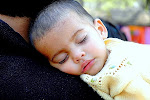American terror
Monday, September 22, 2008
YET another attack by the United States Air Force on suspected Taliban hideouts has resulted in the death of innocent civilians. In one of the worst atrocities witnessed so far after the U.S. occupation of Afghanistan in 2001, at least 90 civilians were killed in an air strike on Azizabad village in Herat province on August 22. The victims had gathered there to commemorate the death of a local leader, and according to the government of Afghanistan, 50 of those killed were under the age of 15. Reports said the attack was carried out by an AC-130 gunship.
President Hamid Karzai was quick to condemn the killings. He accused the U.S. forces of “martyring at least 70 people, most of them women and children”. On many occasions earlier, when U.S./North Atlantic Treaty Organisation (NATO) forces had killed civilians from the air, an anguished Karzai had asked the U.S. to exercise caution. A spokesman for the Afghan Army said officials had counted 60 children and 10 women among the dead. Karzai tried belatedly to douse public anger by sacking two top Afghan military officials who had initially claimed that all those killed in the air attack were Taliban fighters. Taliban fighters are now operating virtually at the gates of Kabul. Despite the presence of more than 70,000 Western troops, the Taliban has managed to gain territory in Maydan Shar, the capital of Wardak province, which is less than 40 km from the capital. Since July, the Taliban has also stepped up attacks on the
President Hamid Karzai was quick to condemn the killings. He accused the U.S. forces of “martyring at least 70 people, most of them women and children”. On many occasions earlier, when U.S./North Atlantic Treaty Organisation (NATO) forces had killed civilians from the air, an anguished Karzai had asked the U.S. to exercise caution. A spokesman for the Afghan Army said officials had counted 60 children and 10 women among the dead. Karzai tried belatedly to douse public anger by sacking two top Afghan military officials who had initially claimed that all those killed in the air attack were Taliban fighters. Taliban fighters are now operating virtually at the gates of Kabul. Despite the presence of more than 70,000 Western troops, the Taliban has managed to gain territory in Maydan Shar, the capital of Wardak province, which is less than 40 km from the capital. Since July, the Taliban has also stepped up attacks on the
 At the Guder camp where Pakistanis fleeing the fighting in the tribal areas near Bajur, believed to be hideouts of the Taliban, take refuge. More than 300,000 people have been displaced from their homes and have ended up in camps such as this in Peshawar and other places in Pakistan.
At the Guder camp where Pakistanis fleeing the fighting in the tribal areas near Bajur, believed to be hideouts of the Taliban, take refuge. More than 300,000 people have been displaced from their homes and have ended up in camps such as this in Peshawar and other places in Pakistan.
Kabul-Jalalabad road, the main supply route for NATO forces.
The Western media have reported regular attacks in recent weeks on truck convoys carrying materials for NATO forces heading for Kabul. The road from Kabul to Kandahar is also very unsafe. Vehicles can only move if they are protected by units of the Afghan Army. In the third week of August, the Taliban killed 10 French soldiers in Sarobi, 50 km from Kabul, on the Kabul-Jalalabad road. French President Nicholas Sarkozy had, under pressure from Washington, agreed to dispatch 700 more soldiers to Afghanistan this year, sparking a controversy in France. The war in Afghanistan is unpopular in France and the other European countries that

An attack by the U.S. Air Force in Azizabad village in Afghanistan’s Herat province on August 22 killed family members of this woman as also of many others. It was one of the worst air strikes since the U.S. occupation of the country in 2001
have troops on the ground in Afghanistan. As the Taliban advances stealthily, Washington is ratcheting up the pressure on Islamabad to crack down with full military force on its tribal areas. The Pakistani Army chief, Gen. Ashfaq Parvez Kayani, was summoned by the Pentagon for yet another top-level strategy meeting in the last week of August. Kayani had earlier met senior NATO and Afghan military officials in Kabul. The meeting, held on board the U.S. aircraft carrier USS Abraham Lincoln, was attended by Admiral Mike Mullen, Chairman of the U.S. Joint Chiefs of Staff, General David H. Petraeus, the top U.S. commander in Iraq, and other senior American officers playing key roles in the anti-insurgency operations in Afghanistan and Iraq.Of the 33,000 U.S. troops in Afghanistan, 19,000 operate directly under U.S. Central Command. The rest are part of the 40-nation force led by NATO, which operates under a U.N. resolution. With the occupation force unable to stem the Taliban tide, the Pakistani government, under pressure from Washington, ordered its Air Force to target relentlessly the tribal areas where Taliban and Al Qaeda fighters are supposedly holed up. Admiral Mullen told the media that the U.S. and Pakistani militaries must intensify efforts to crack down on insurgents. According to reports in the Pakistani media, the NATO command will identify the areas of resistance and the Pakistani Army will target those places on its behalf.



0 comments:
Post a Comment